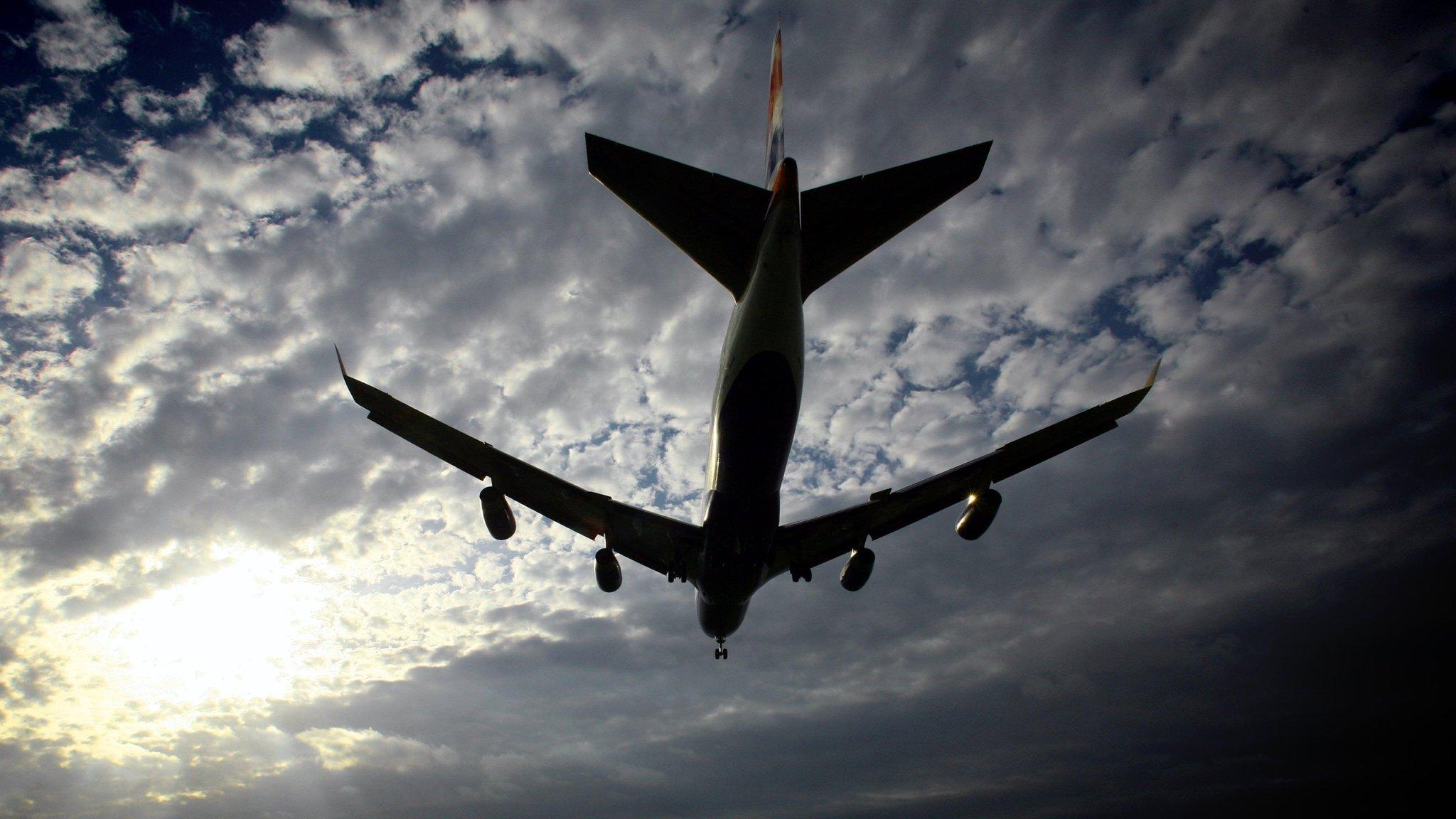'Drone' hits BA plane: Police investigate Heathrow incident
- Published
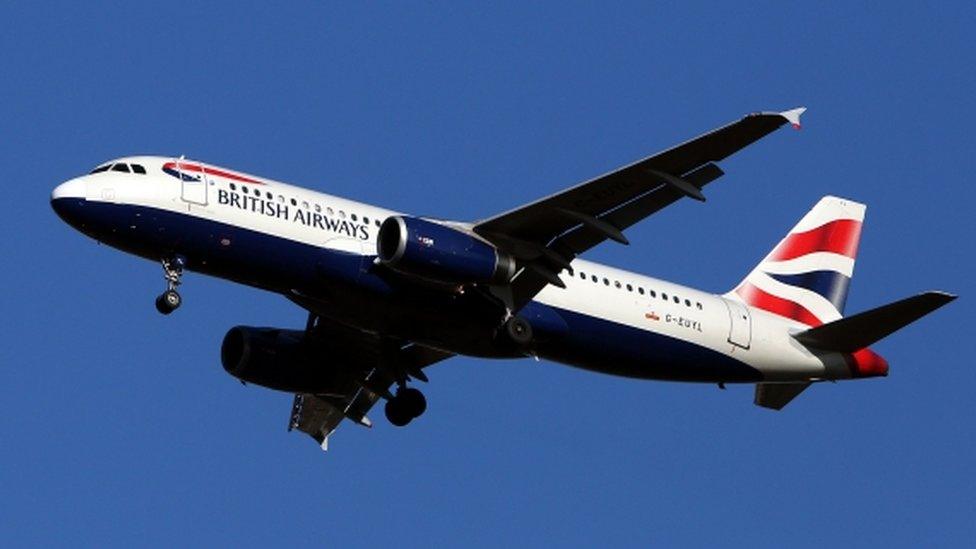
Police said the suspected drone had struck an inbound Airbus A320, similar to this one
A police investigation is under way after a passenger plane approaching Heathrow Airport flew into what is believed to have been a drone.
The British Airways flight from Geneva, with 132 passengers and five crew on board, was hit as it approached the London airport at 12:50 BST on Sunday.
If confirmed, it is thought it would be the first such incident in the UK.
BA said it would give the police "every assistance with their investigation". No arrests have been made, police say.
The Metropolitan Police said, external the plane was hit by the drone at about 1,700ft (580m) while flying over the area of Richmond Park, in south west London.
No debris has been found and police have asked for anyone who finds drone parts in the Richmond area to come forward.
The force's aviation security unit, based at Heathrow, is leading the investigation.
'Very real danger'
After safely landing the plane, the pilot reported an object had struck the front of the Airbus A320.
A BA spokesman said: "Our aircraft landed safely, was fully examined by our engineers and it was cleared to operate its next flight."
Chief Superintendent Martin Hendy, head of the Met's aviation policing command, said the incident highlighted "the very real dangers of reckless, negligent and some times malicious use of drones".
A Civil Aviation Authority (CAA) spokesman said it was "totally unacceptable" to fly drones - which are generally used to capture aerial film or photographs - close to airports.
Steve Landells, from the British Airline Pilots Association (Balpa), said it had been "only a matter of time before we had a drone strike". He called for greater enforcement of existing rules.
Are drones dangerous or harmless fun?

Analysis
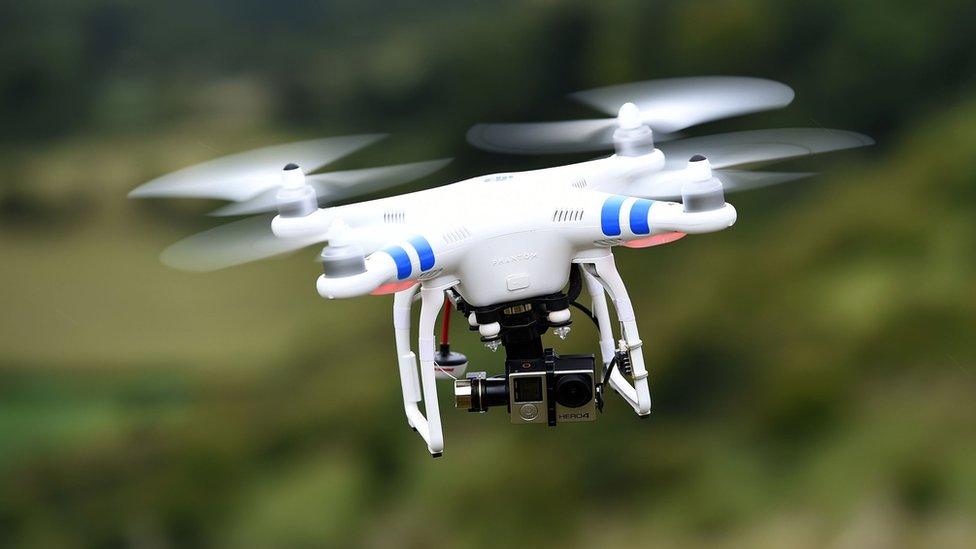
Leo Kelion, Technology editor
Flying a drone near an airport can already be punished with up to five years in prison, and rules also forbid, external flying them "beyond the direct unaided line of sight" of the operator or near buildings and crowds of people. Drones may not fly above 400ft (122m).
But the latest incident will only add to the pressure for further steps to be taken.
The US recently introduced a compulsory registration scheme so any drone recovered from an accident can be traced back to its owner.
In addition, officials could make it mandatory for drones to run geo-fencing software - that would prevent them flying in restricted areas.
The Department for Transport has promised to publish a strategy for unmanned aircraft this year.
Pilots have also called for it to fund tests into what would happen if a drone got sucked into an engine or crashed into a plane's windscreen.
Last month, the British Airline Pilots Association noted that while the threat of bird strikes had been well researched, there was little data about how much damage a drone could cause a plane.
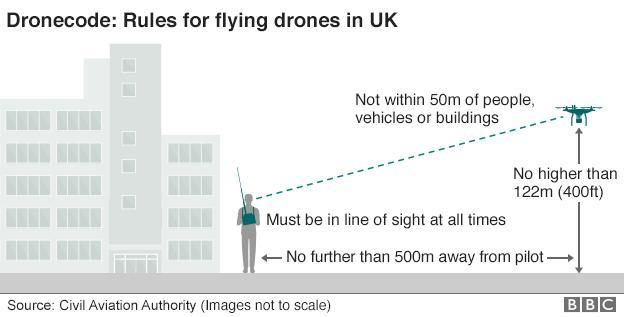

The incident follows a warning earlier this year by the head of the International Air Transport Association Tony Tyler that drones flown by the general public are "a real and growing threat" to civilian aircraft.
The UK Air Proximity Board - which investigates near-miss incidents in UK airspace - said there had been a number of serious near-misses at UK airports involving drones.
David Black, from Blackwing Aerial Services - a company that specialises in licensed commercial drones - said education and enforcement of the current rules were important, particularly for hobbyists.
"I think a register is a good idea," he said.
"With firearms it has shown it's a good thing... but it has not stopped bad guys from getting guns. If you're going to use them as weapons, bad guys can build them themselves.
"You need enforcement, but the problem with enforcement is that it costs money and people to carry it out.... There needs to be better technology for detection and avoidance."
Geo-fencing is available in some drones - a database within the drone will not let it take off if it is near an airport so that operators cannot accidentally fly into trouble.
Mr Landells from Balpa added: "The law as it stands says you're not supposed to go above 400ft (122m) or 500m away from the base unit, depending on the drone you're using, but we've been seeing incidents up at 8,000 feet, where drones just have no place to be, so we've got to do something.
"That's a registration process, some sort of tracking, some sort of electronic security - we've got to do something about this."

Drone incidents at UK airports
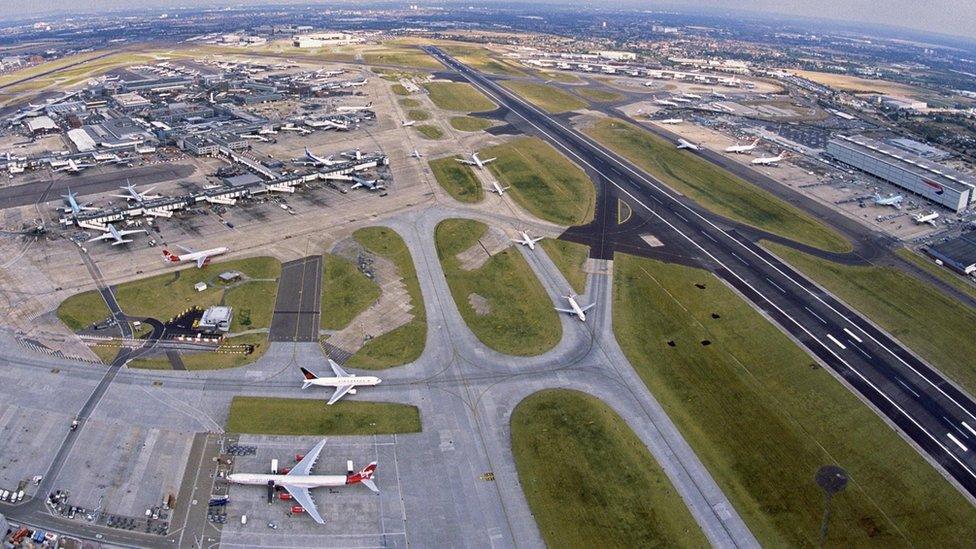
17 April 2016 - A British Airways plane approaching Heathrow is believed to have hit a drone while in midair
28 November 2015, external - The pilot of an A321 plane narrowly missed a drone hovering at 100ft above a runway at Gatwick Airport
30 September 2015, external - A small drone helicopter passed within 30ft of the cockpit of an A319 plane while on the approach to Heathrow
22 September 2015, external - A "quadcopter-type drone" missed the right-hand side of a B777 plane by about 25m while at 2,000ft after it left Heathrow Airport
13 September 2015, external - A silver drone with a "balloon-like" centre missed an E170 aircraft by about 20m, while the plane was approaching London City Airport over the Thames
13 September 2015, external - A drone flew over the top of a B737 aircraft while at 4,000ft, missing it by about 5m, shortly after it left Stansted
27 August 2015, external - A DO328 aircraft flew within 50ft of a drone while approaching Manchester Airport at 2,800ft
Source: The UK Airprox Board, external

- Published18 April 2016
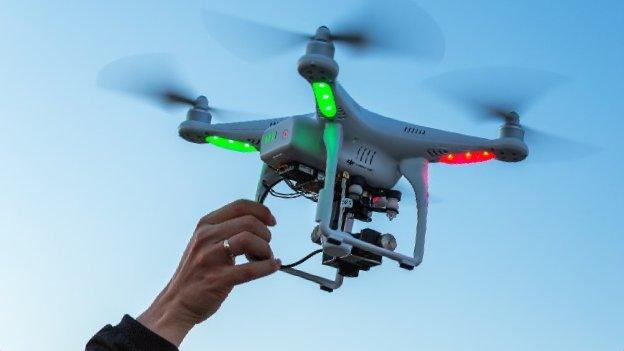
- Published17 April 2016
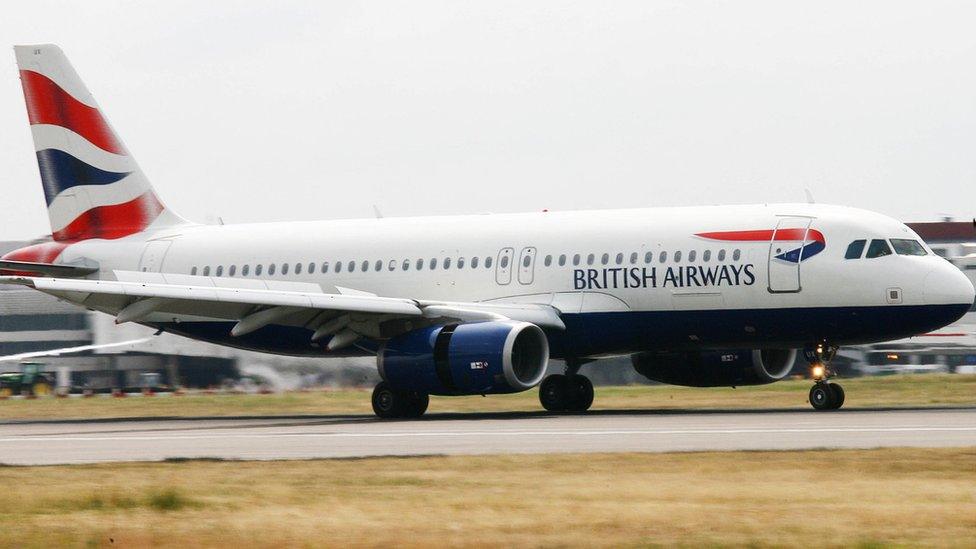
- Published15 February 2016

- Published5 October 2015
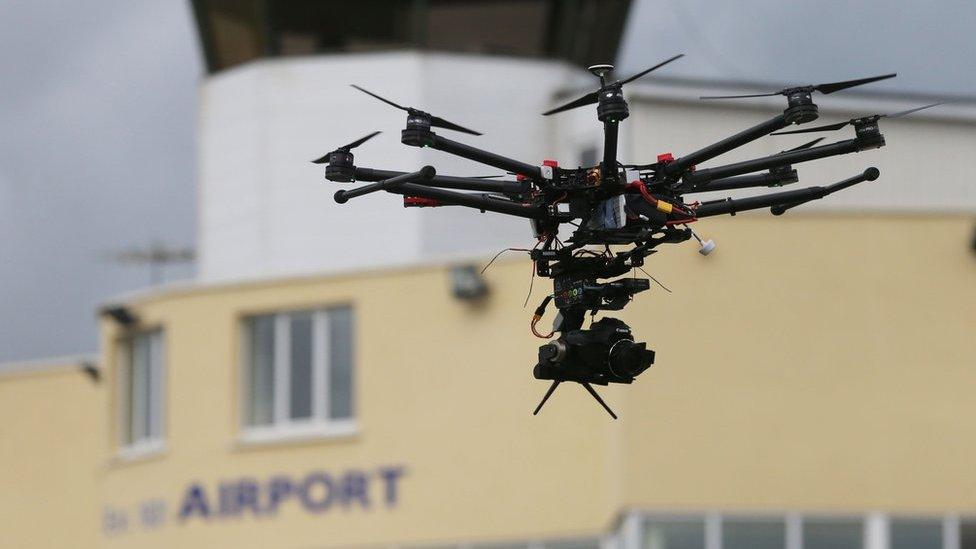
- Published29 January 2016
